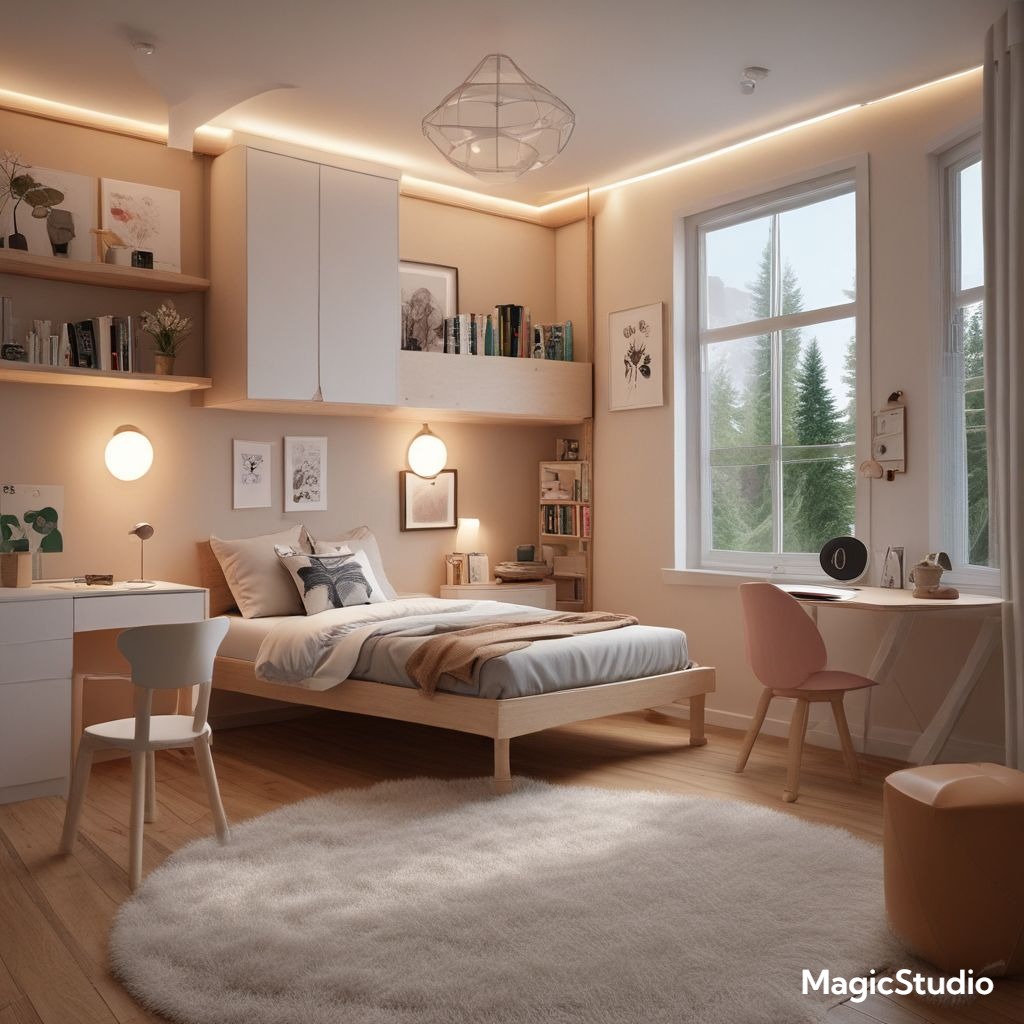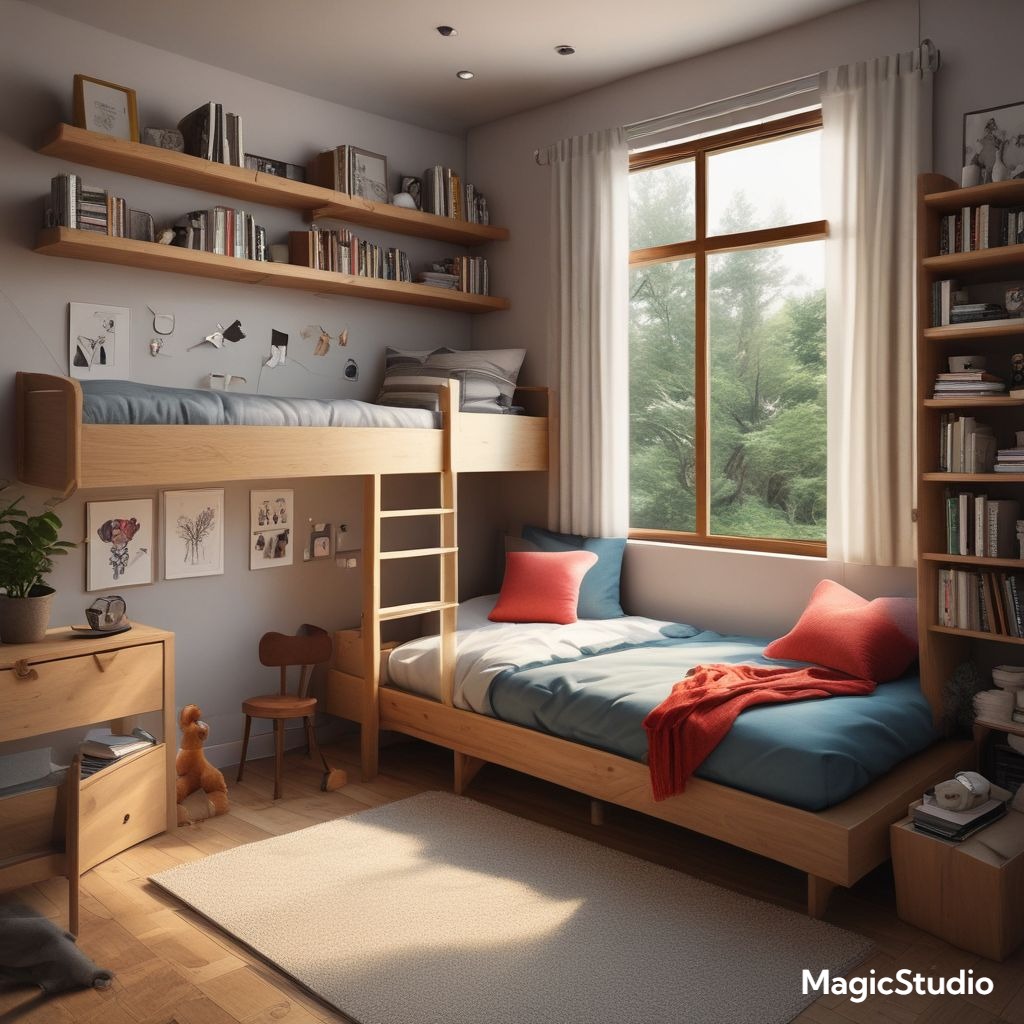Designing a Japandi-inspired kids’ bedroom in a small space requires a delicate balance of minimalist aesthetics, natural elements, and child-friendly functionality. This style embraces the simplicity of Scandinavian design with the warmth and serenity of Japanese tradition, creating a harmonious and calming space for your little ones. Here are 25 design ideas to help you achieve a Japandi look that is both stylish and practical for your child’s small bedroom.
Natural Light and Minimalist Windows
Maximize natural light by utilizing large windows or skylights. Opt for sheer curtains or blinds to allow light to filter in while providing privacy. This creates a bright and airy atmosphere, essential for a small space. Consider using minimalist window frames in natural wood tones to complement the Japandi aesthetic.
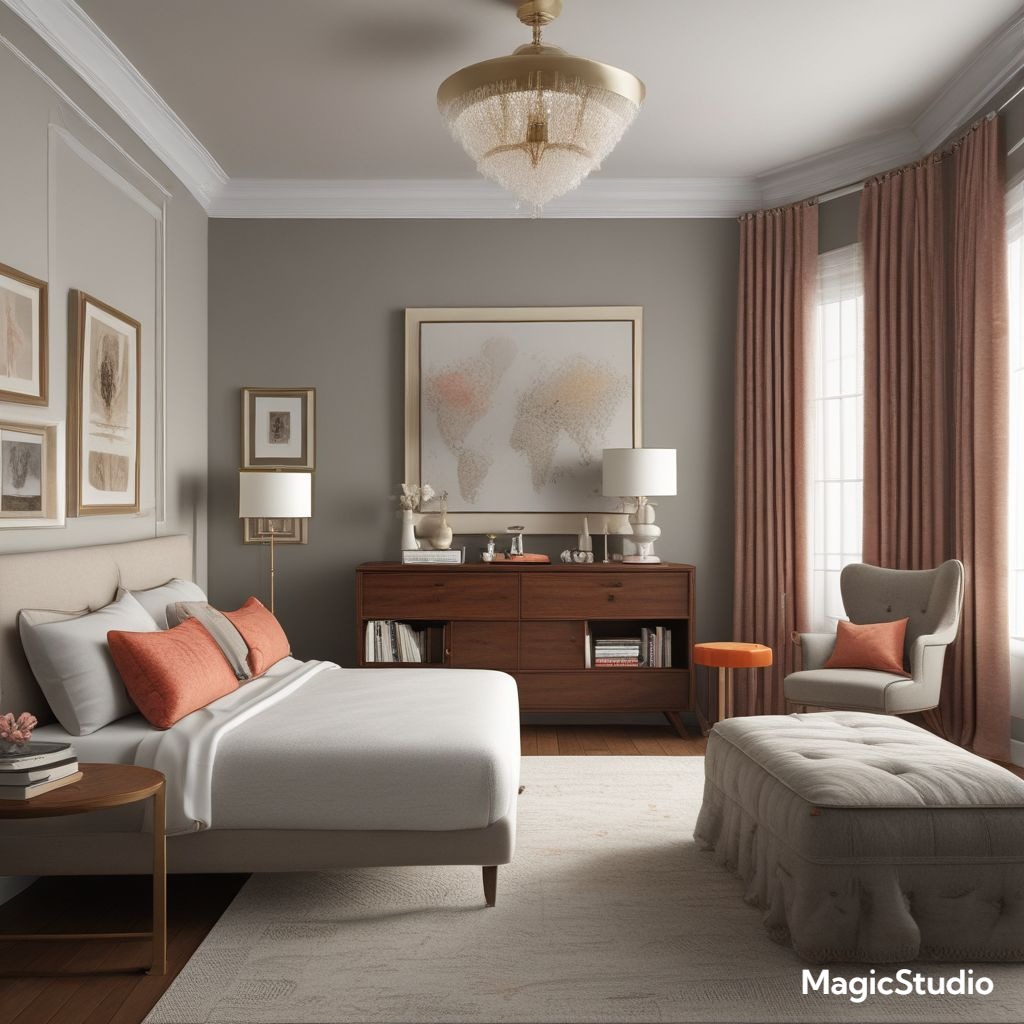
Light Wood Flooring
Light wood flooring is a staple of the Japandi style. Choose pale oak, birch, or maple flooring to brighten the space and create a sense of spaciousness. The warm tones of wood contribute to the natural and calming ambiance desired. Consider using engineered wood or laminate for a more budget-friendly option.
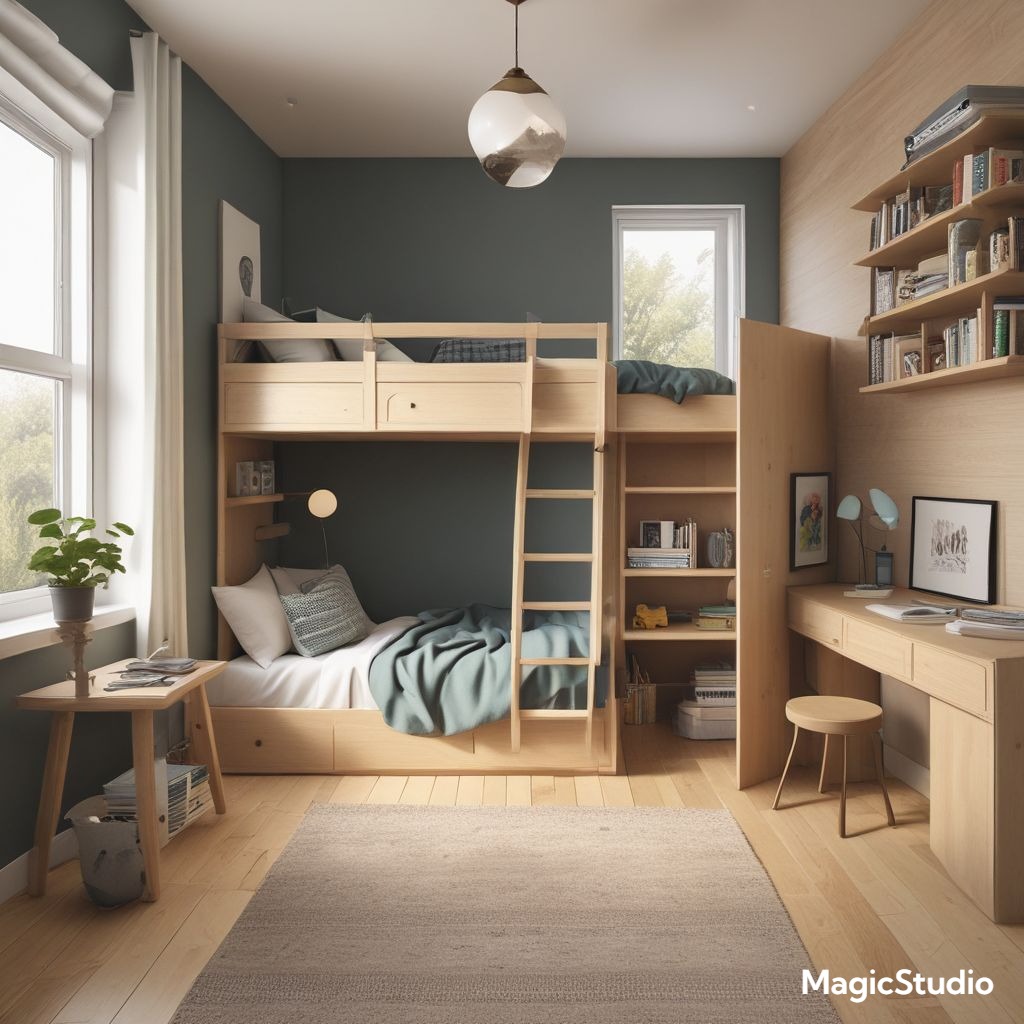
Neutral Wall Colors
A neutral color palette is key to creating a calming and minimalist space. Opt for soft creams, whites, light grays, or beige for the walls. These colors provide a blank canvas for incorporating pops of color through textiles and accessories. Popular neutral shades in the US and EU include “Cloud White” and “Creamy Beige”.
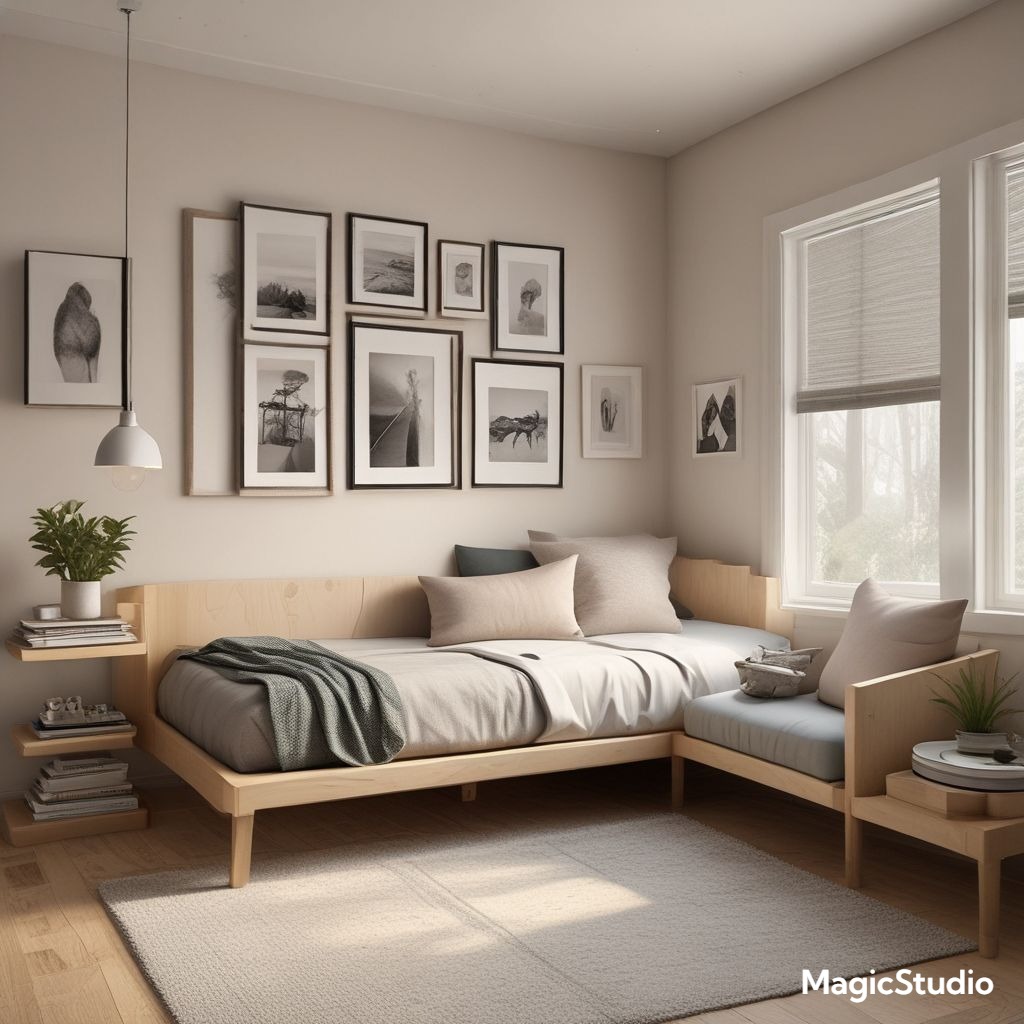
Bamboo or Wicker Furniture
Bamboo and wicker furniture are both natural and sustainable choices that align perfectly with the Japandi style. Their light and airy designs add texture and visual interest to the room without overwhelming the small space. Consider a bamboo bed frame, wicker storage baskets, or a rattan armchair for a cozy reading nook.
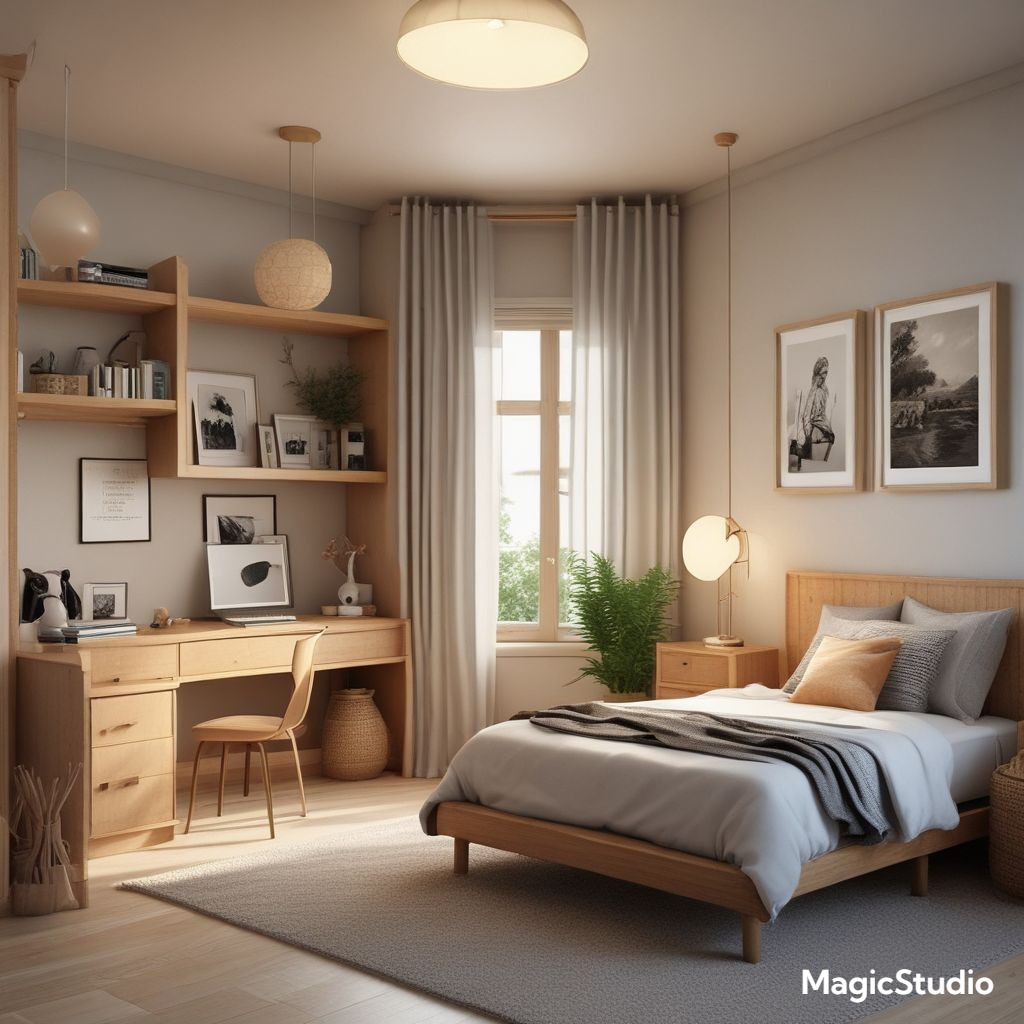
Multifunctional Furniture
Maximize space by incorporating multifunctional furniture pieces. A futon sofa bed can serve as both seating and sleeping space, while a storage ottoman can double as a footrest and a hiding place for toys. Look for furniture with built-in storage compartments to keep clutter under control. This concept is particularly popular in the EU, where smaller living spaces are common.
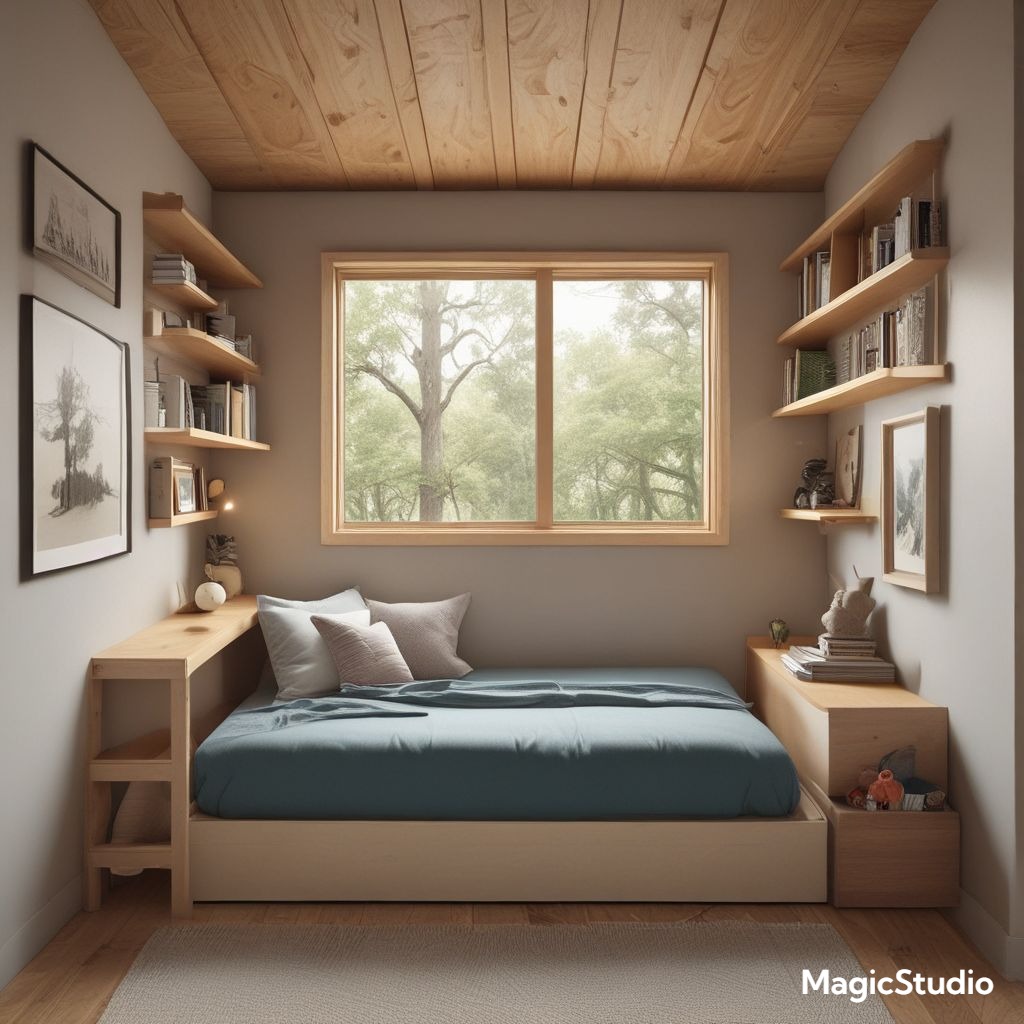
Geometric Patterns
Incorporate geometric patterns, such as stripes, chevrons, or triangles, into textiles and accessories. These patterns add visual interest and dynamism to the space while maintaining a minimalist aesthetic. Choose subtle tones and keep the patterns relatively small to avoid overwhelming the room.
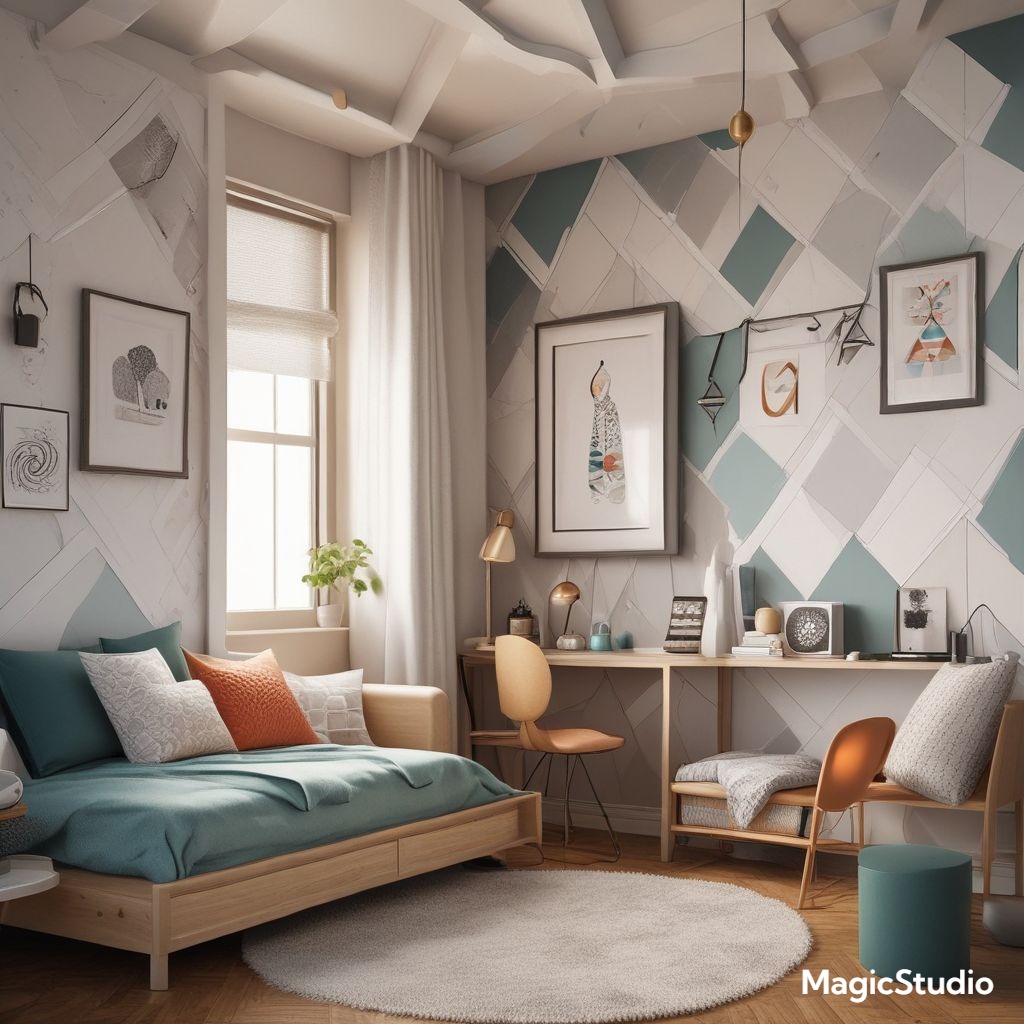
Soft Textiles
Soft and natural textiles are essential for creating a cozy and inviting atmosphere. Opt for linen, cotton, wool, or silk bed linens, throws, and cushions. These materials add a touch of warmth and comfort to the room while maintaining a minimalist aesthetic. The use of natural textiles is a growing trend in the US and EU, driven by a focus on sustainability and wellness.
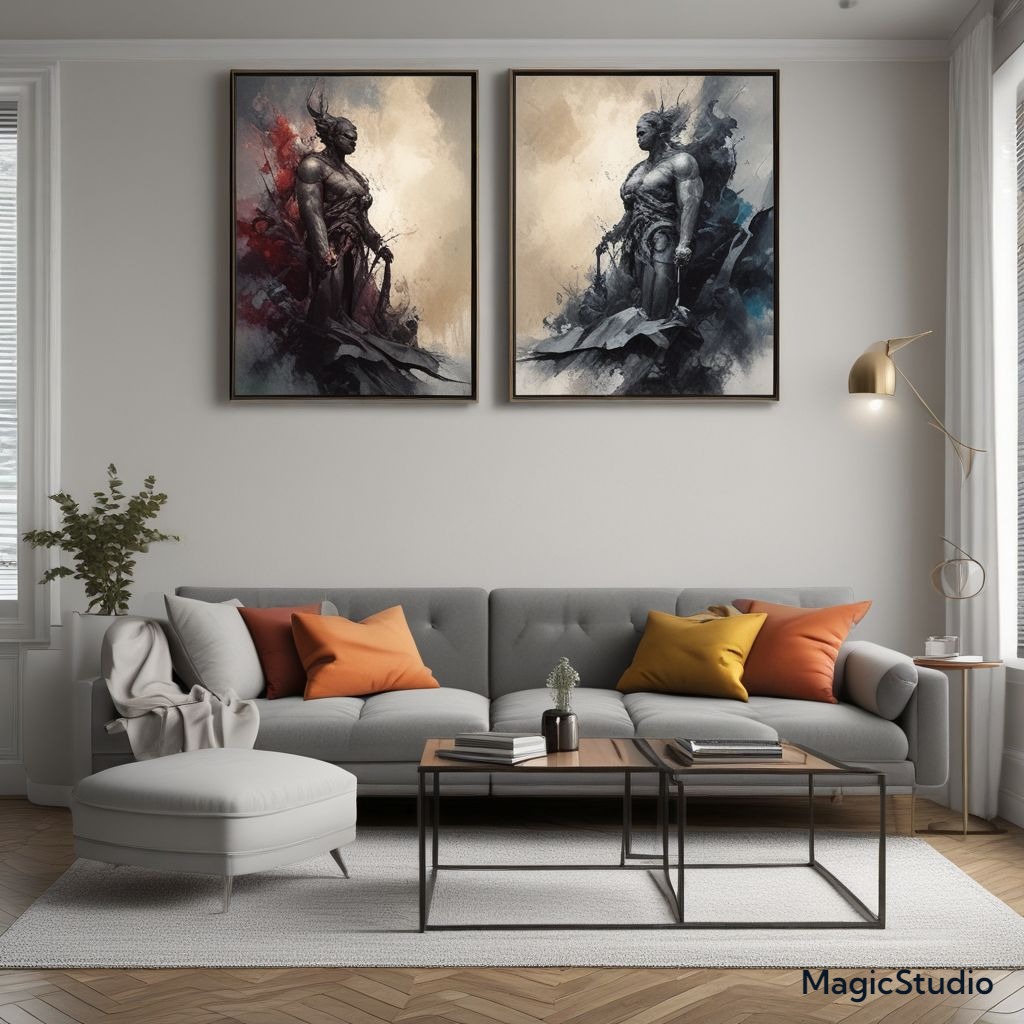
Minimalist Lighting
Keep lighting simple and functional. Opt for pendant lights, table lamps, or floor lamps with clean lines and minimal embellishments. Choose warm white bulbs to create a cozy and inviting atmosphere. Consider using dimmers to adjust the brightness based on the time of day and activity.
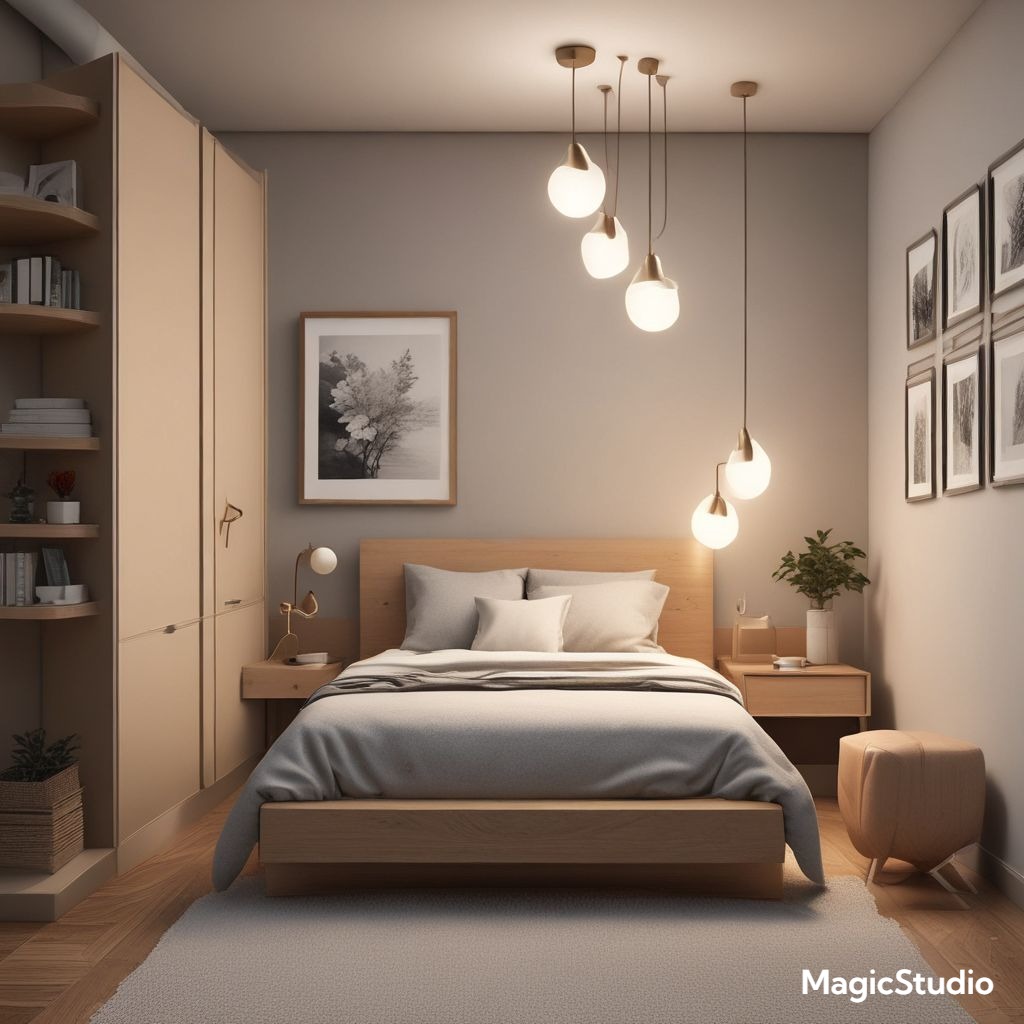
Organic Shapes and Forms
Incorporate organic shapes and forms into the decor. A round rug, a curved bookshelf, or a vase with a natural wood base will add a touch of nature to the room. These shapes complement the clean lines of the Japandi style and create a more inviting atmosphere. This trend is particularly popular in the EU, where there’s a focus on incorporating natural elements into design.
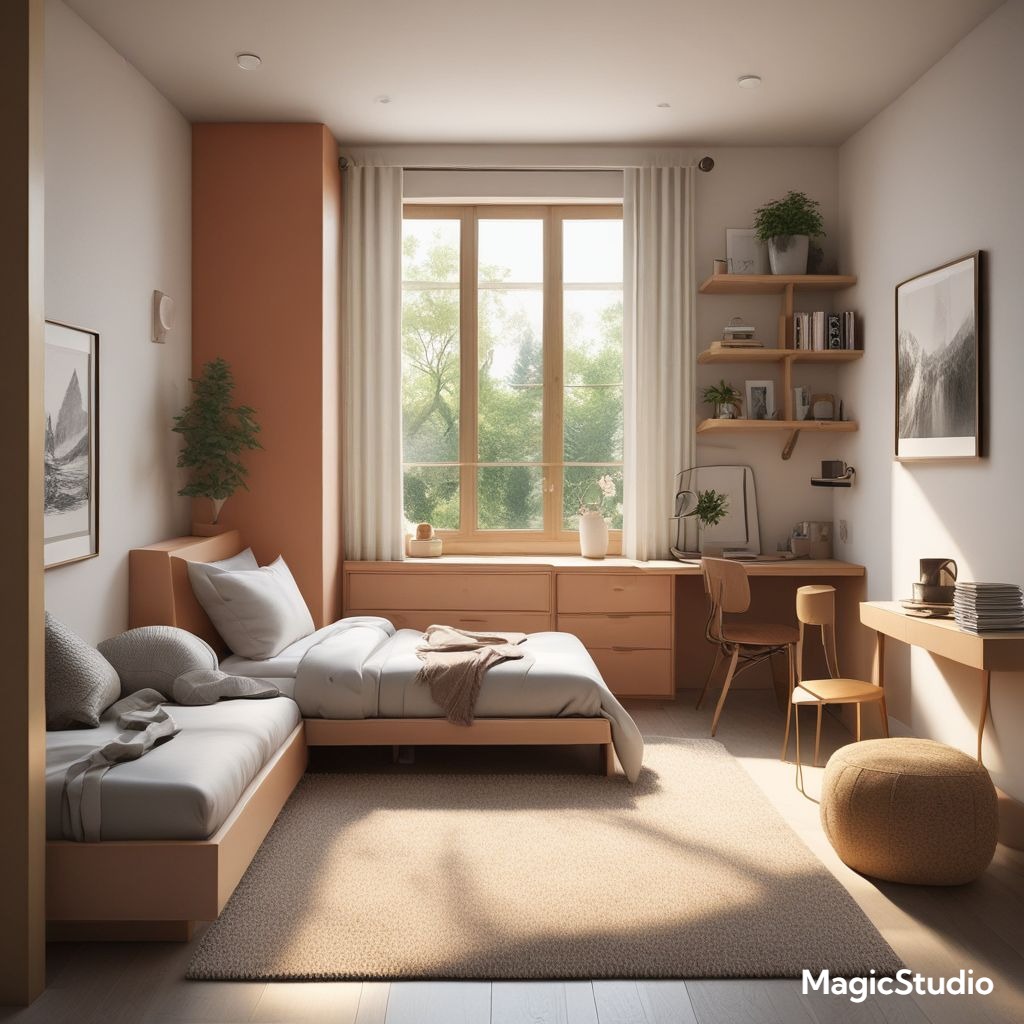
Botanical Prints
Add a touch of nature with botanical prints or artwork. These prints can feature flowers, plants, or landscapes, and can be incorporated into the bedding, curtains, or wall art. Choose prints with muted colors and minimal details to maintain the minimalist aesthetic.
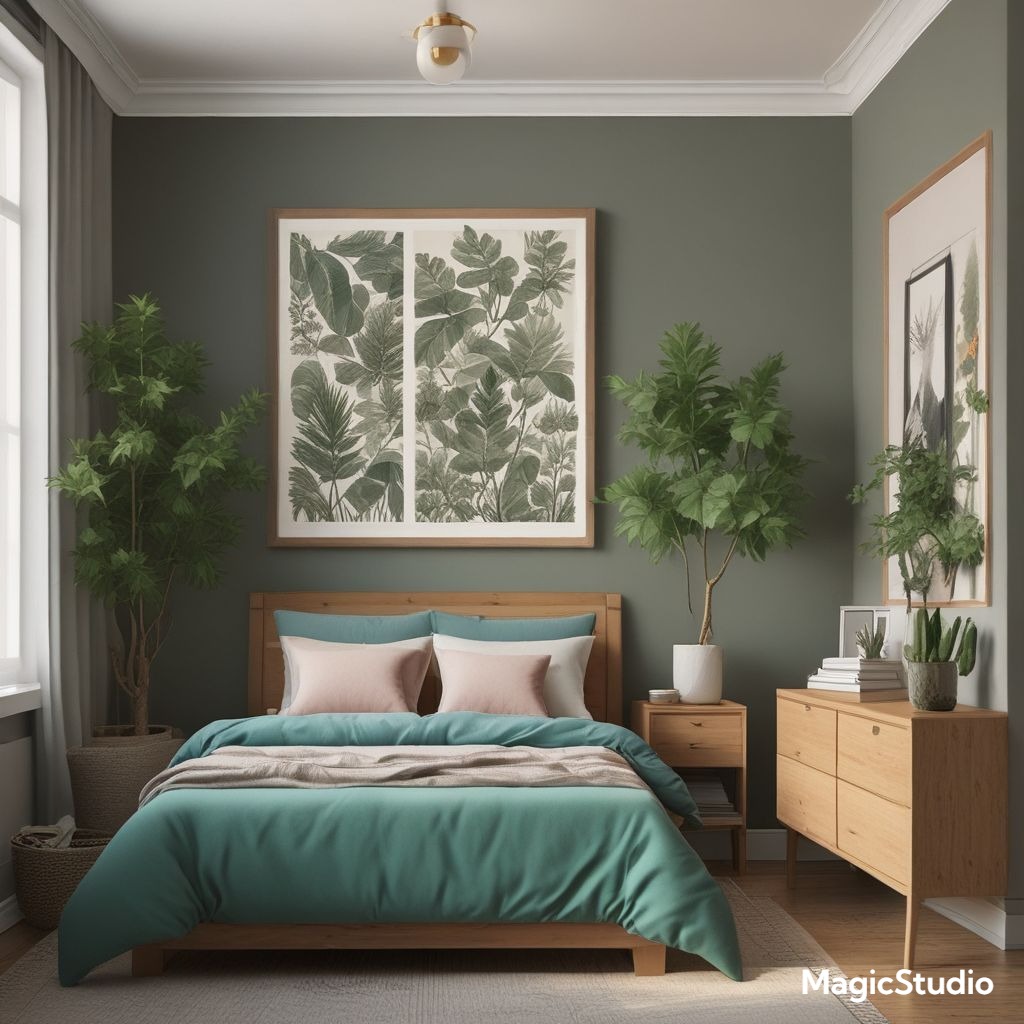
Statement Wall Art
A single statement piece of art can add personality and visual interest to the room. Choose a piece that complements the Japandi aesthetic, such as a minimalist abstract painting, a black and white photograph, or a calligraphy scroll. Place the artwork above the bed or on a prominent wall to create a focal point.
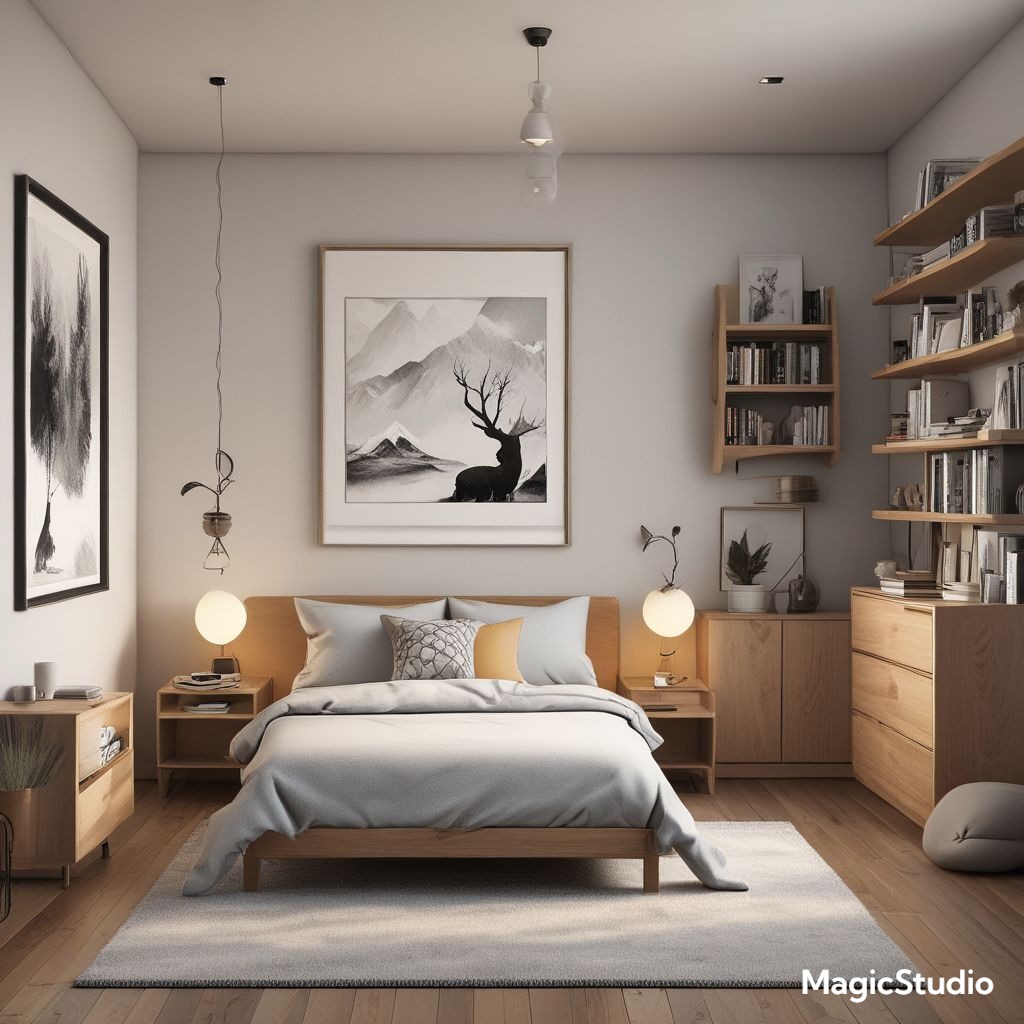
Storage Solutions
Maintain a clutter-free environment with functional storage solutions. Use open shelving, baskets, and drawers to keep toys, clothes, and books organized. Opt for storage solutions in natural materials like wood, bamboo, or wicker to complement the Japandi style. The trend of utilizing open shelving and baskets for storage is becoming increasingly popular in the US and EU as people prioritize visual tidiness and an airy aesthetic.
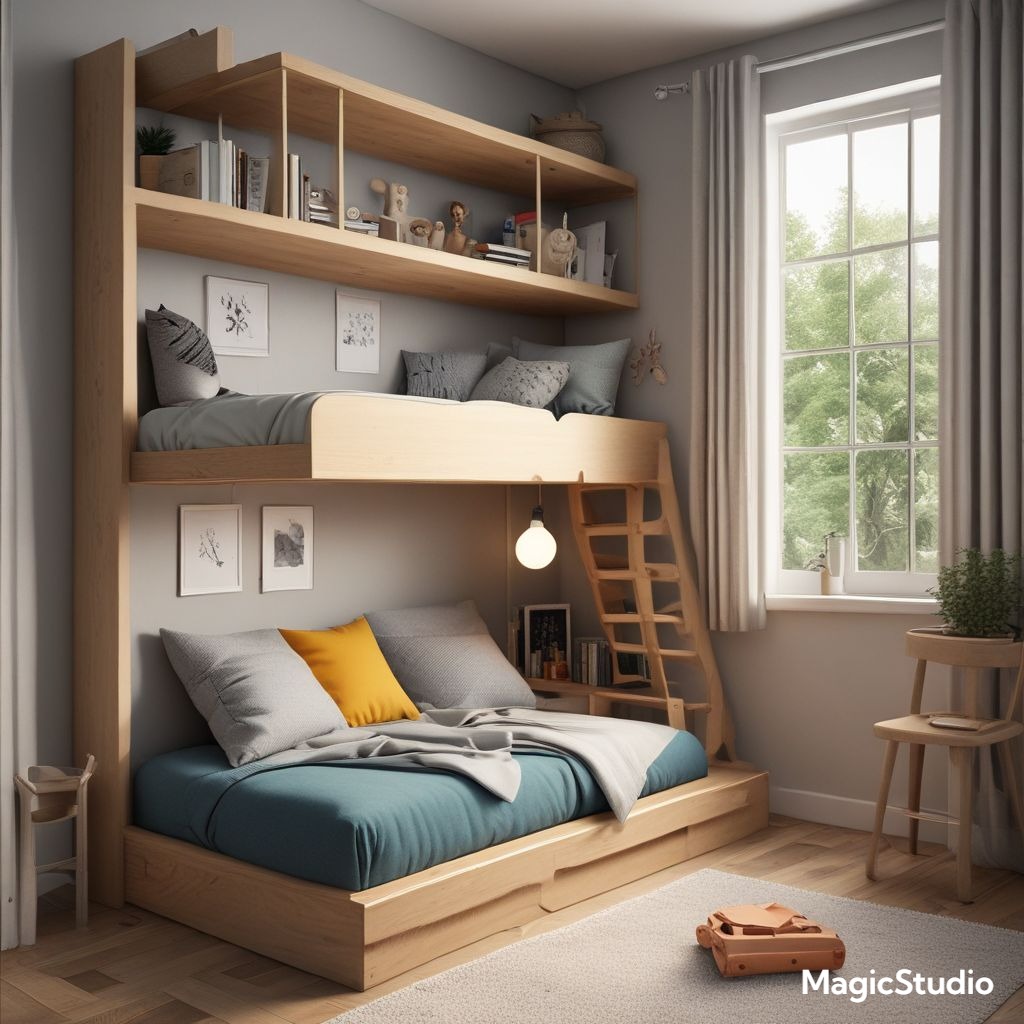
Personal Touches
Don’t be afraid to add personal touches to the room to reflect your child’s interests and personality. A few well-chosen toys, books, or decorative items can add a touch of whimsy and warmth to the space. Consider using a small child-sized armchair or a teepee-like play tent to create a cozy and inviting reading nook or play area.
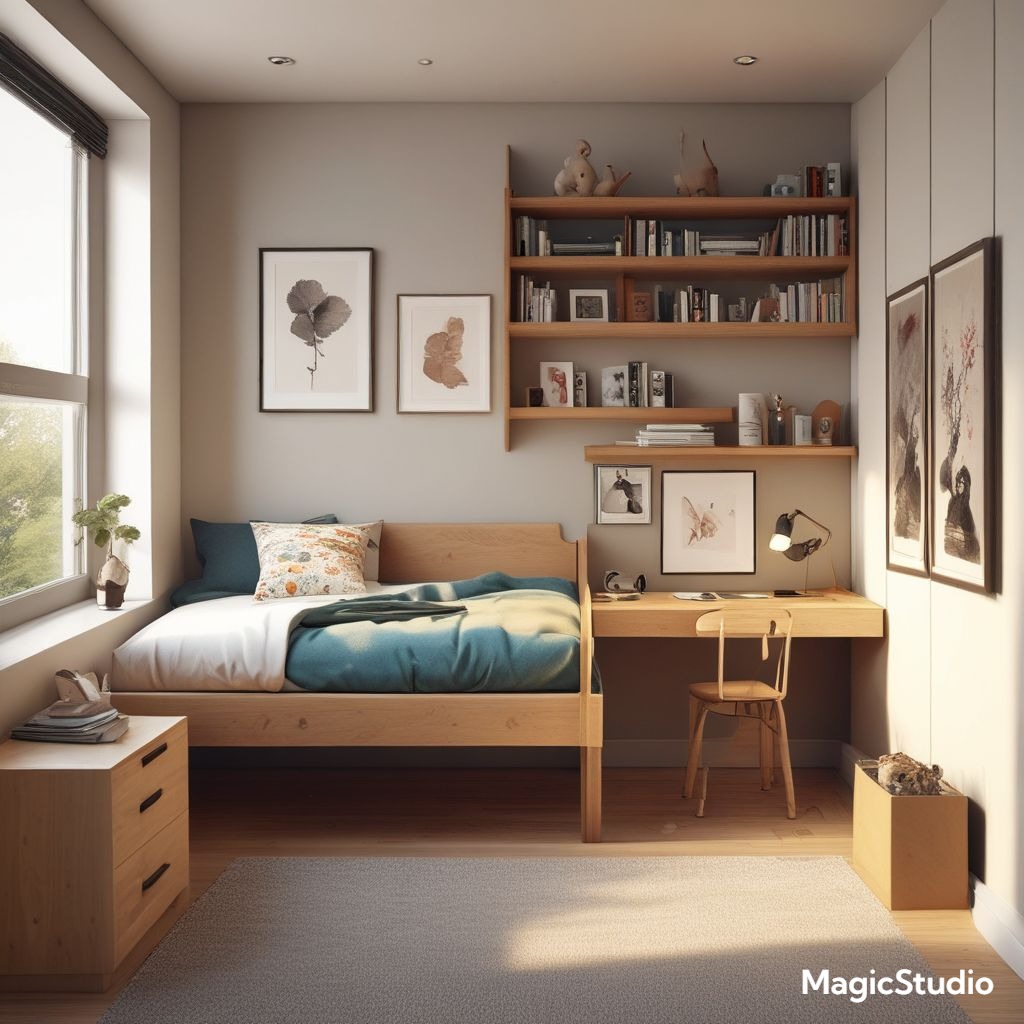
Playful Pops of Color
While the Japandi aesthetic is primarily centered around neutrals, incorporating pops of color through textiles, artwork, or accessories can add a touch of playfulness to the room. Choose bright but muted colors like soft blues, greens, or yellows to complement the overall minimalist aesthetic. This approach is becoming increasingly popular in the US and EU, as people seek to add a touch of personality and vibrancy to their homes while staying true to a minimalist design aesthetic.
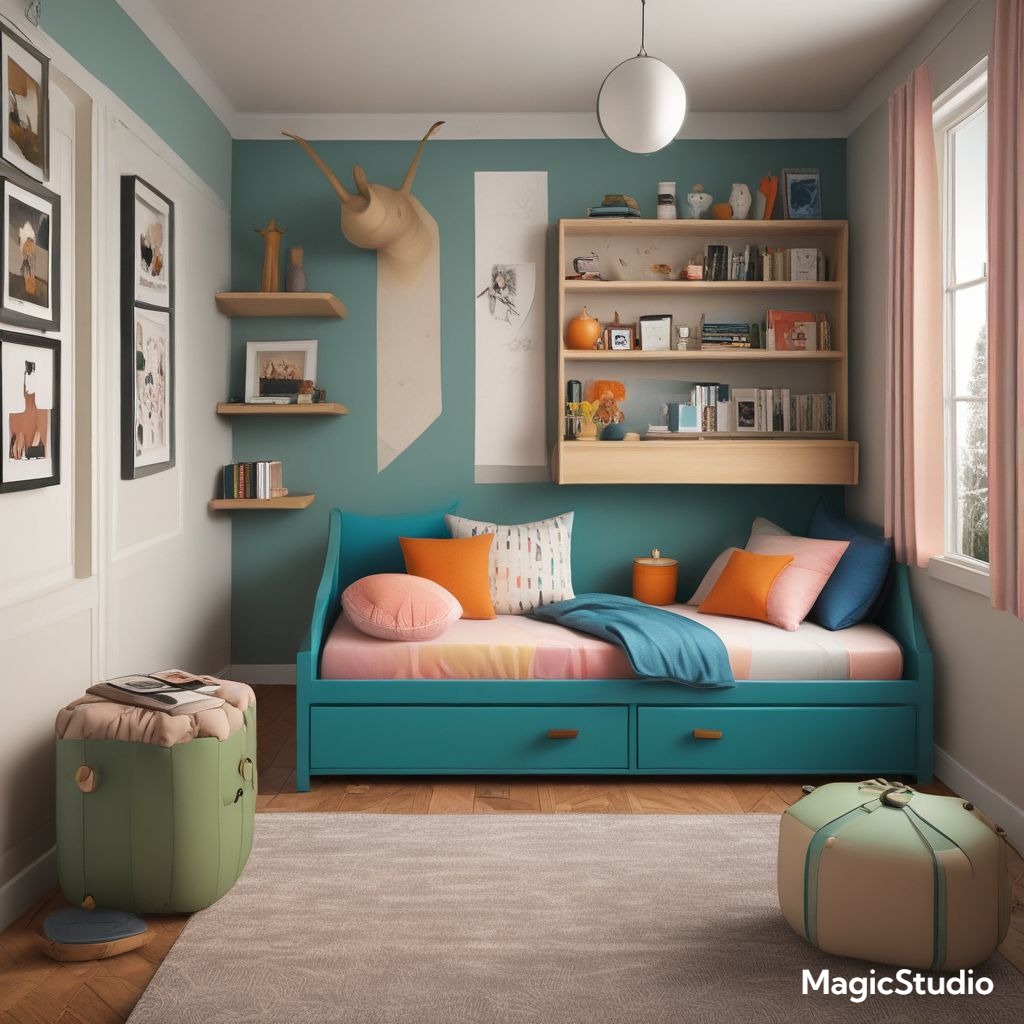
Floor Cushions
Floor cushions are a practical and stylish addition to a Japandi kids’ bedroom. They provide comfortable seating for reading or playing, and can be easily stored away when not in use. Choose cushions in natural fabrics like linen or cotton, and consider using a variety of shapes and sizes to create a playful and inviting atmosphere.
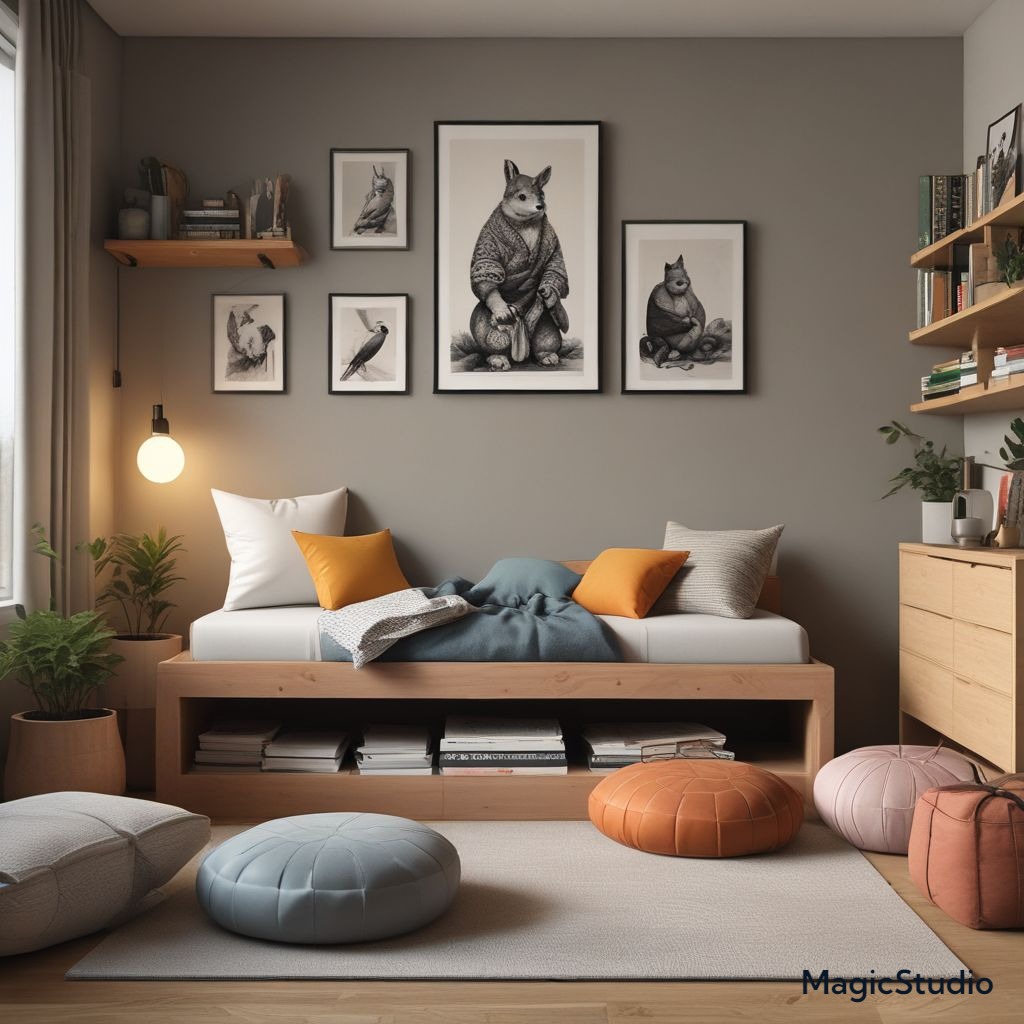
Child-Friendly Rugs
A rug can add warmth, texture, and color to the room. Choose a rug in a neutral color like cream or beige, or opt for a rug with a subtle pattern or geometric design. Consider using a washable rug for easy cleaning, particularly in areas where children spend a lot of time playing.
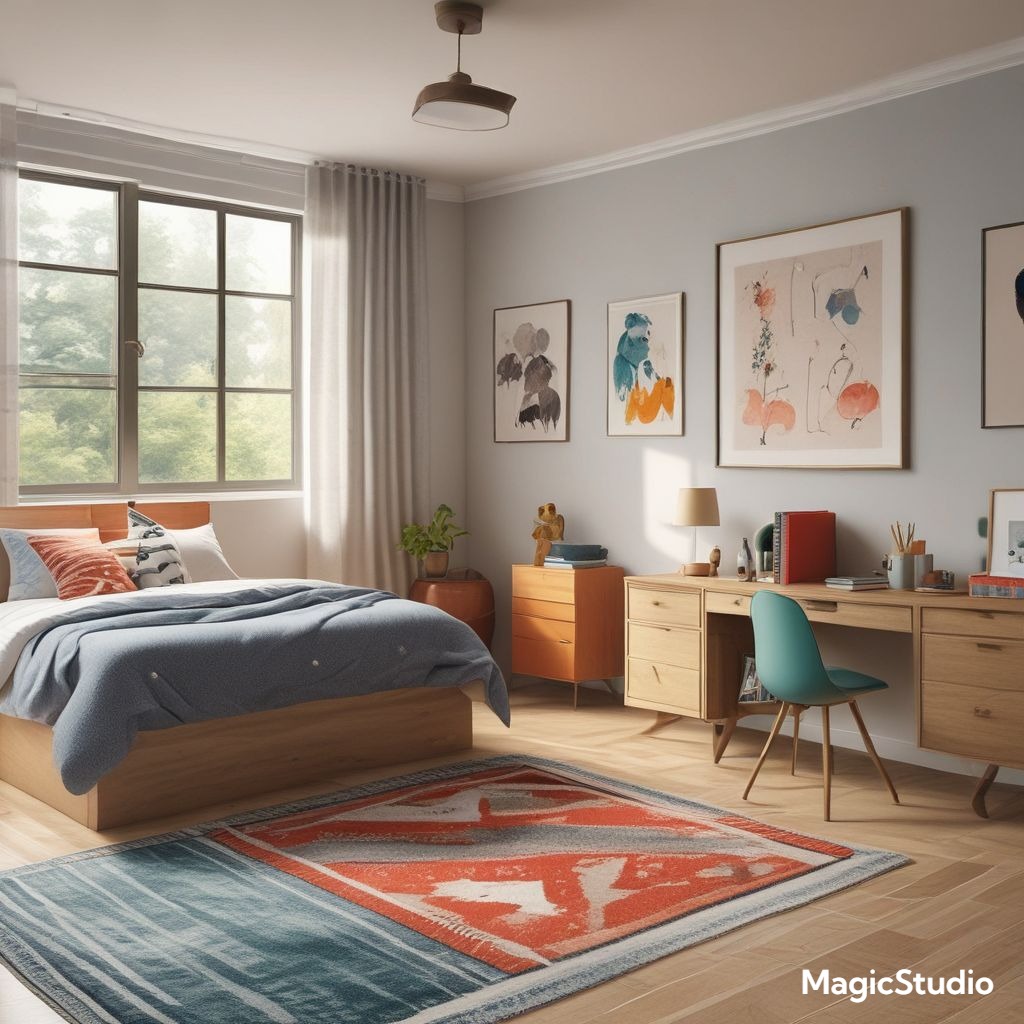
Vertical Storage
Maximize vertical space by utilizing shelves and wall-mounted storage solutions. This allows you to keep toys, books, and other items organized while freeing up floor space. Opt for shelves in natural wood or bamboo to complement the Japandi style.
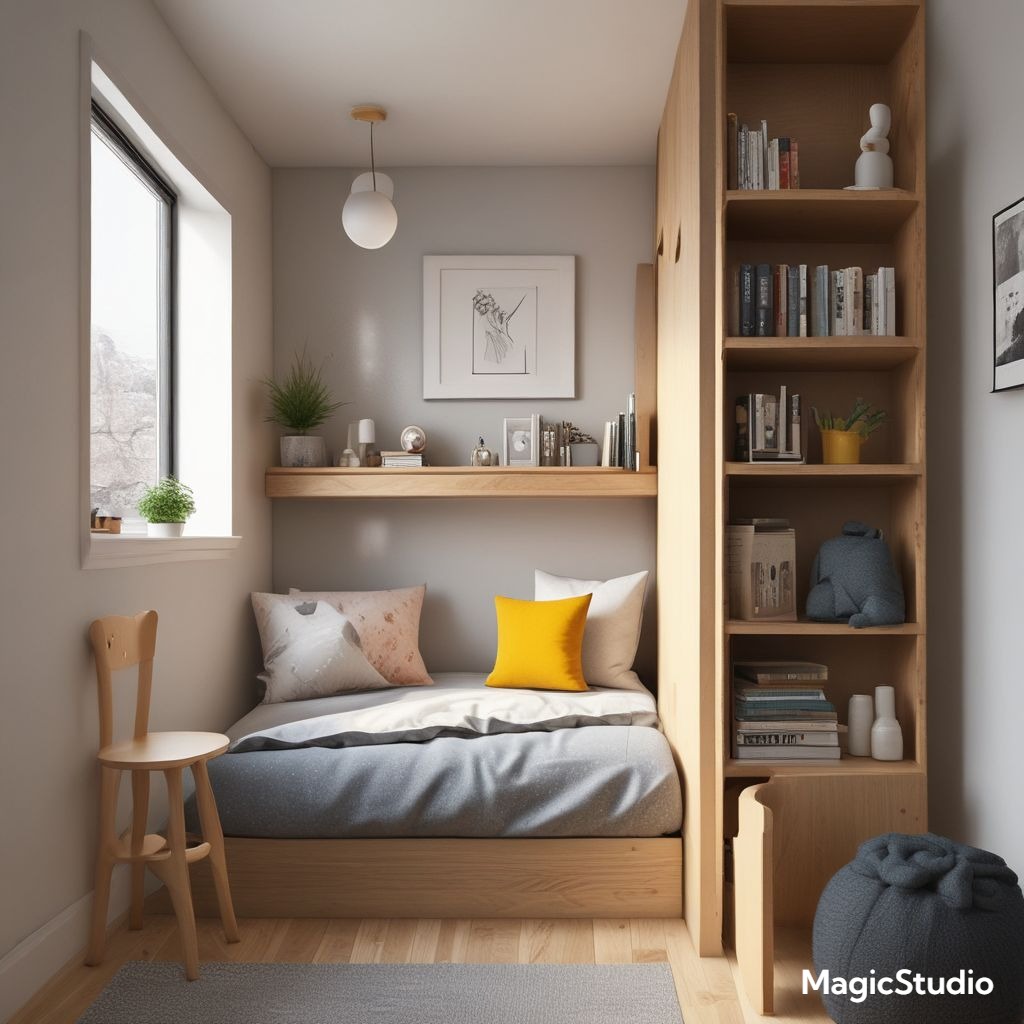
Minimalist Play Areas
Keep play areas simple and functional. Encourage imaginative play with a few carefully chosen toys, such as wooden blocks, stuffed animals, or creative art supplies. Avoid clutter by storing toys in baskets or bins when not in use.
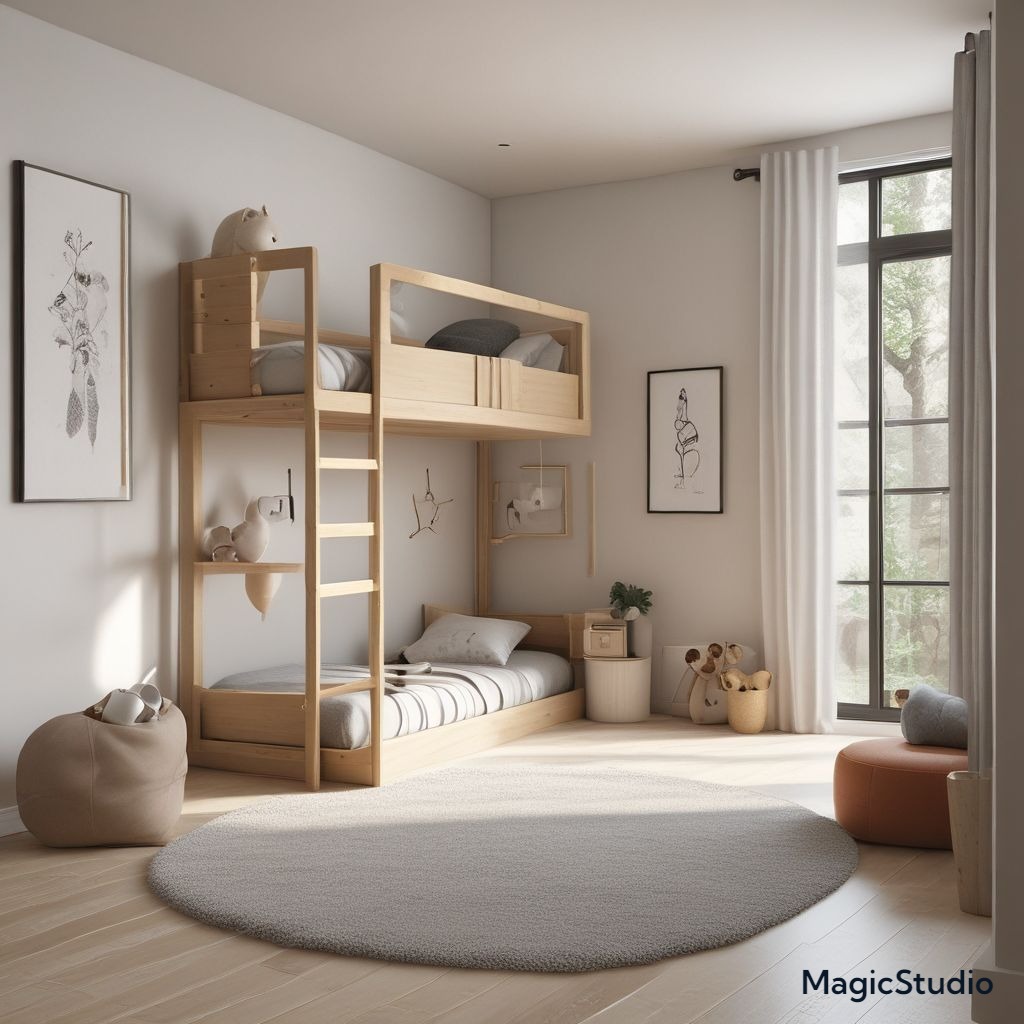
Eco-Friendly Materials
Choose furniture and decor made from eco-friendly materials whenever possible. Look for products made from sustainable wood, bamboo, or recycled materials. This approach aligns with the Japandi aesthetic’s emphasis on natural and sustainable design.
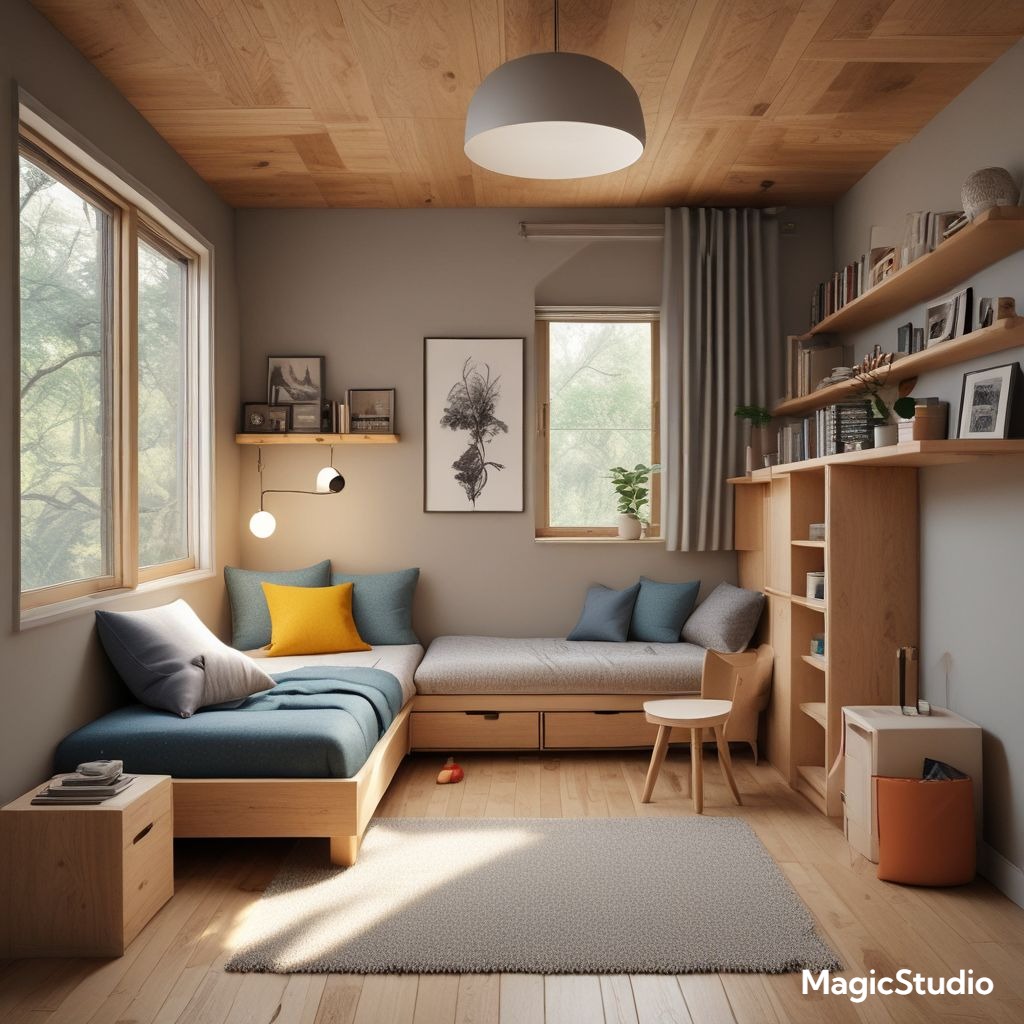
Customizable Wall Decor
Consider using removable wallpaper or wall decals to add a touch of personalization to the space. These options allow you to change the look of the room as your child grows and their tastes evolve. Choose patterns and colors that complement the Japandi aesthetic, such as geometric shapes, botanical motifs, or minimalist landscapes.
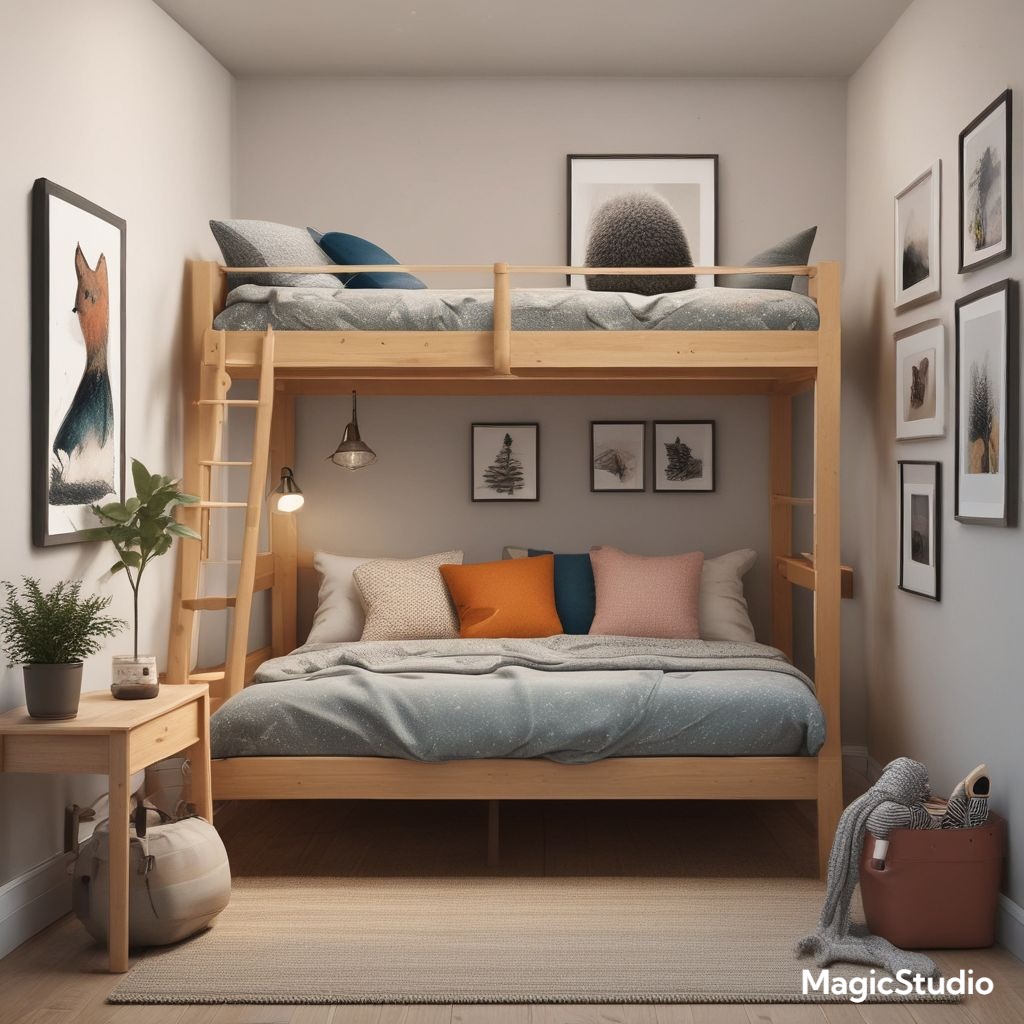
Creative Lighting Solutions
Get creative with lighting to add visual interest and functionality to the room. Consider using string lights, fairy lights, or paper lanterns to create a warm and inviting atmosphere. These lighting options can also provide a soft and comforting glow for bedtime stories.
